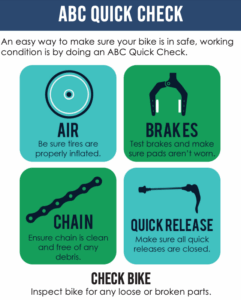Biketober is rolling around to Atlantic Station again! Share your rides, compete with friends, and win prizes, like an REI gift card or a new e-bike, just for riding. With the weather cooling, there’s no better time to break out your bike—join the challenge now!
Atlantic Station boasts unique access to bike lanes, paths, and local biking groups. Find all you’ll need to ride with confidence in this guide.
Getting on the road
To start riding, you might need a bike. Don’t own one? Try the Relay docking station at District Avenue NW and 17th Street, where you can rent a bike in 15-minute increments ($0.25 each after the first one, which is $3.50) or get an hour each day with a monthly pass. Pro tip: there are also student and SNAP discounts available.
Once you’re loaded (don’t forget a helmet), you’re free to cruise any road in the Station, plus in the dedicated bike lanes on 17th Street. These connect to more bike infrastructure on State Street and Hemphill Avenue, which can get you across I-85 along Ferst Drive and 5th Street.
Just remember: Atlantic Station and Atlanta’s guidelines both prohibit bikes on sidewalks. Use this map from our friends at the Midtown Alliance CID to locate all the bike lanes and trails within Midtown. If you’d like to widen your reach, check out the PATH Foundation trails throughout Metro Atlanta or the rider-recorded routes on Strava and Ride With GPS.
riding with confidence
Starting your route can be daunting, even for veteran riders. That’s why Love to Ride has tips for new rides, regular rides, maintaining your bike, and more—check out the courses, videos, and tip sheets on their site so you can hit the road or trail safely.
Need a little more hands-on practice? Propel ATL offers free bike classes for beginners, city cyclists, and anyone looking to level up their ride. Instructors certified by the League of American Bicyclists can teach you everything from proper signaling to the best way to carry cargo.
Whatever your level, we recommend keeping the Georgia Bikes Bicyclist Pocket Guide handy: it’ll keep you refreshed on road rules, the ABC Quick Check (pictured below), and more biking resources across Georgia.
Roll with other riders
Want to ride along with your crew? Critical Mass gathers hundreds of cyclists on the last Friday of every month at 6 p.m. at Woodruff Park. Join to ride a new route each month at a slow, scenic pace.
MWR ATL is another option for social rides within Atlanta. Most rides begin and end at 97 Estoria in Cabbagetown, a short ride from the King Memorial and Inman Park MARTA stations. You can also join their Biketober team to track more rides together! Check their calendar and social media for info on upcoming rides.
More rides are rolling throughout Atlanta, and many of them are listed on FlashRide. Check back for more rides being added in the future.
Win rewards for your ride!
Competing in Georgia Commute Options’ Biketober challenge is a great way to get cycling with your friends around the city. Plus, you can win prizes for inviting other riders and logging your rides! Sign up now to make the most of Biketober, October 1st – 31st.






